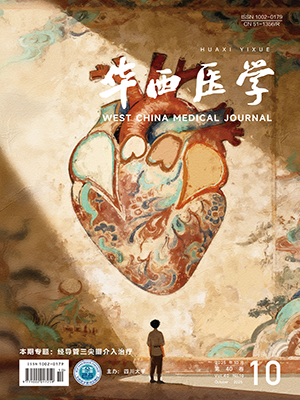| 1. |
Bedford JL, Warrington AP. Commissioning of volumetric modulated arc therapy (VMAT)[J]. Int J Radiat Oncol Biol Phys, 2009, 73(2):537-545.
|
| 2. |
Bedford JL. Treatment planning for volumetric modulated arc therapy[J]. Med Phys, 2009, 36(11):5128-5138.
|
| 3. |
Otto K. Volumetric modulated arc therapy:IMRT in a single gantry arc[J]. Med Phys, 2008, 35(1):310-317.
|
| 4. |
Treutwein M, Hipp M, Koelbl O, et al. Searching standard parameters for volumetric modulated arc therapy (VMAT) of prostate cancer[J]. Radiat Oncol, 2012, 7:108.
|
| 5. |
Kuijper IT, Dahele M, Senan S, et al. Volumetric modulated arc therapy versus conventional intensity modulated radiation therapy for stereotactic spine radiotherapy:a planning study and early clinical data[J]. Radiother Oncol, 2010, 94(2):224-228.
|
| 6. |
赵充, 卢泰祥, 韩非, 等. 139例鼻咽癌调强放疗的临床研究[J]. 中华放射肿瘤学杂志, 2006, 15(1):1-6.
|
| 7. |
ICRU. Prescribing, recording, and reporting photon-beam intensitymodulated radiation therapy (IMRT)[J]. J ICRU, 2010, 10(1):34-36.
|
| 8. |
Feuvret L, Noël G, Mazeron JJ, et al. Conformity index:a review[J]. Int J Radiat Oncol Biol Phys, 2006, 64(2):333-342.
|
| 9. |
Lee TF, Chao PJ, Ting HM, et al. Comparative analysis of SmartArcbased dual arc volumetric-modulated arc radiotherapy (VMAT) versus intensity-modulated radiotherapy (IMRT) for nasopharyngeal carcinoma[J]. J Appl Clin Med Phys, 2011, 12(4):3587.
|
| 10. |
Rao M, Yang W, Chen F, et al. Comparison of Elekta VMAT with helical tomotherapy and fixed field IMRT:plan quality, delivery efficiency and accuracy[J]. Med Phys, 2010, 37(3):1350-1359.
|
| 11. |
Guckenberger M, Richter A, Krieger T, et al. Is a single arc sufficient in volumetric-modulated arc therapy (VMAT) for complex-shaped target volumes?[J]. Radiother Oncol, 2009, 93(2):259-265.
|
| 12. |
Boylan CJ, Golby C, Rowbottom CG. A VMAT planning solution for prostate patients using a commercial treatment planning system[J]. Phys Med Biol, 2010, 55(14):N395-N404.
|
| 13. |
Jordan TJ, Williams PC. The design and performance characteristics of a multileaf collimator[J]. Phys Med Biol, 1994, 39(2):231-251.
|
| 14. |
Galvin JM, Smith AR, Lally B. Characterization of a multileaf collimator system[J]. Int J Radiat Oncol Biol Phys, 1993, 25(2):181-192.
|
| 15. |
李长虎, 张春莉, 徐利明, 等. 多叶准直器角度因素对调强放疗计划实施效率的影响[J]. 中华放射肿瘤学杂志, 2013, 22(6):482-484.
|
| 16. |
Yang Y, Zhang P, Happersett L, et al. Choreographing couch and collimator in volumetric modulated arc therapy[J]. Int J Radiat Oncol Biol Phys, 2011, 80(4):1238-1247.
|
| 17. |
Mancosu P, Cozzi L, Fogliata A, et al. Collimator angle influence on dose distribution optimization for vertebral metastases using volumetric modulated arc therapy[J]. Med Phys, 2010, 37(8):4133-4137.
|
| 18. |
Martin S, Chen JZ, Rashid Dar A, et al. Dosimetric comparison of helical tomotherapy, RapidArc, and a novel IMRT & Arc technique for esophageal carcinoma[J]. Radiother Oncol, 2011, 101(3):431-437.
|
| 19. |
Chen JZ, Chen CZ, Atwood TF, et al. Volumetric modulated arc therapy planning method for supine craniospinal irradiation[J]. J Radiat Oncol, 2012, 1(3):291-297.
|
| 20. |
Webb S. Does the option to rotate the Elekta Beam Modulator MLC during VMAT IMRT delivery confer advantage? A study of "parked gaps"[J]. Phys Med Biol, 2010, 55(11):N303-N319.
|




